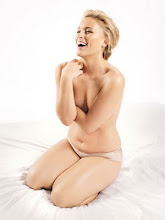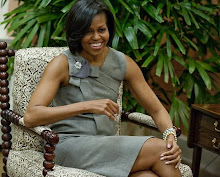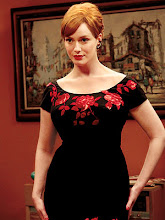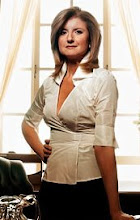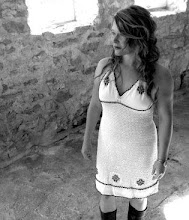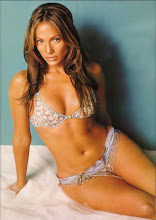 197 pounds
197 poundsUnless you are living in a cave, you know that Chelsea Clinton got married this weekend. Supposedly, the wedding cost something like six gazillion dollars. I don't know, and I don't care. Some people are up in arms about how much the thing cost, but at least the Clintons are doing their part to stimulate the economy, right?
What does interest me about the event is Hillary.
Specifically Hillary's wardrobe choices.
On Friday night, the Clintons hosted a "private pre-wedding party" in lieu of a rehearsal dinner presumably so Chelsea and Marc could hang with younger and cooler people than her parents' Washington friends, and what Hillary wore to that party truly astonishes me. Here is a photo from that night:
I mean, this is a woman KNOWN for her bad pantsuits:
sunny yellow pantsuits . . .
electric blue pantsuits . . .
tangerine orange pantsuits . . .
Pantsuits, pantsuits, pantsuits!
And on top of that, mother-of-the-bride outfits are notorious for being unflattering—there usually just a pantsuit in which the pants have been turned into a long skirt like this . . .
This is vintage Hillary. So you would think Hillary would have spent last weekend in one of those things, right?
After all, it takes a really hip lady to go to her daughter's wedding in anything remotely fashion forward, and if there's one thing we know, it's that the Secretary of State is not hip.
Smart, yes. Hip, no.
So why then did HRC get it so incredibly right this past weekend?
I really have no idea. Maybe she finally hired a good stylist. Maybe she's feeling more relaxed now that she's not constantly trying to convince everyone why she should be president.
No matter what the reason, you have to admit it: Hill looked good!
In fact, she looked so good that the rest of us—especially those of us who have average-size bodies (read size 10-16)—could stand to learn something from her. Let's examine her Friday night outfit a bit more closely, shall we. . .
1) First and foremost, Hill is doing something I've probably never seen her do before: She's showing cleavage! Cleavage—if you've got it—is a middle-aged woman's best friend. (And if you don't, you probably have great arms and shoulders you can show off instead.) By showing just a little decollatage, Hillary does an expert job of drawing our eye to what is probably the sexiest part of her body.
(As an aside, I can't believe I just used the word "sexy" in the same sentence with a reference to Hillary Clinton.)
2) Her dress is fitted right below her bust line—at the smallest part of her waist. This choice serves the purpose of drawing attention to Hillary's defined waistline, which until now I didn't even know she had. When you look at this picture . . .
. . . it's really obvious how much a fitted waist can do to flatter your body. My God, Hillary Clinton has a body! And she's rocking that dress. Who would've thunk it?
3) She hides her upper arms. I don't want to say that all middle-aged woman or all curvy women should never show their upper arms because I don't believe that's the case. On more than one occasion, I've seen a real-sized woman wear tiny little spaghetti straps and look gorgeous. But I do think that when ALL eyes are going to be on you—which is the case if you're the mother of the bride OR the secretary of state—it's wise to hide the part of your body that often doesn't look as fit as it used to after a certain age.
4) She's not afraid of color. What's the go-to color for most women? Black. The black dress is so popular, we even have a name for it: the little black dress. I like a black dress as much as the next woman, but if you rely on it every time, it can get boring. Sure, it works for a less glamourous event—like a funeral or a business meeting or even a friend's wedding. But at an event when you are the star attraction—or one of them, in Hillary's case—color is always better. I used to be afraid of color, but I've embraced it over the past few years, and I notice that EVERY SINGLE TIME I wear a colorful dress, I get a compliment, many times from men. Trust me, this is a fail-safe.
5) She's embracing the drama. If you think about it, this is a risky dress—that's a lot of fabric she's wearing, and it would be hard to pull off if you didn't fully believe it. But not only does she believe in it, she looks happy to be wearing it. And her happiness is contagious. Look at Bill in this picture . . .
He couldn't look more proud. Sure, his pride is probably mostly about his daughter, but if he didn't have a happy, confident woman on his arm, he would not likely look this moved.
I can actually see more of a resemblance between Hillary and Chelsea in this photo than I ever have before. And I don't think that's because they don't normally look alike. It's because Chelsea is almost always smiling, and her mother doesn't do it enough. If only we had see more of this Hillary during the election.
6) She's wearing real heels. Have you ever seen a woman wearing a sensible pair of shoes with a fancy dress? It just doesn't work. Sure, if you have to walk ten blocks to work, by all means, wear sensible shoes. But when you're being picked up in a bulletproof van and escorted to your destination by the Secret Service, you've got NO excuse for not wearing some kick-ass shoes. Hillary shoes aren't really kick ass, but they are the first real heels I have ever seen her wearing, so I'm thrilled by her footwear.
7) She's wearing her hair down. So many women—at formal events especially—go for the updo, and it's a hard look to pull off, especially if you're not used to it. But there's just something about a woman with her hair flowing that looks sexy at any age—think Helen Mirren or Meryl Streep, two women who repeatedly seem to defy their years.
8) She doesn't have helmut head. As we all know, women of a certain age often fall back on helmut hair, and Hill has been doing that for Y E A R S (see pantsuit pictures above), ever since Bill first took office back in the early '90s. But for some reason, she's let it grow a little bit lately. Not only is it the longest I've seen it in years, it's also the most natural. She looks carefree and, again, even sexy. (I even like the blonde mixed with the gray because it makes her look sunny and optimistic without making it look like she's trying to hide her age.)
9) Finally, she broke out the statement jewelry. If you're going to an event this big and you're going to garner this much attention, your strand of pearls won't cut it. You've got to pull out the big guns and either borrow someone else's expensive jewelry or shell out the cash for some good costume pieces.
I never in my life thought I'd be using Hillary Clinton as an example of how regular-sized women should dress, but here I am doing just that. Let this be a lesson to all of us—it's never too late to learn how to look fabulous.






.jpg)









